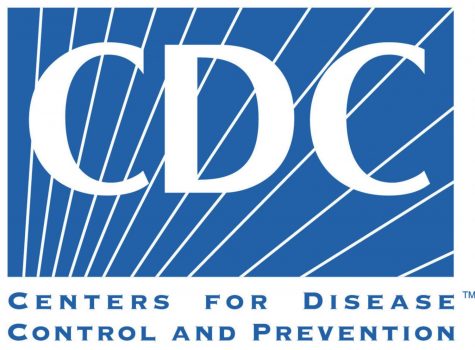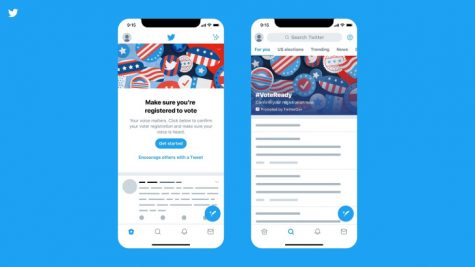#Twitter’s_Role_in_the_Year_2020

November 8, 2020
It is not an understatement to say that the year 2020 is currently a roller coaster—from the collision of the COVID-19 pandemic and the Black Lives Matter (BLM) movement to the upcoming, polarizing presidential election, there has been, so far, no shortage of sensational, or “tweetable” events and topics during this monumental year. Throughout many of 2020’s historical moments, the social media application Twitter has been inseparable from it all as it provides the citizens and leaders of this world with a platform to engage, persuade, and argue.
Twitter possesses a microblogging system, allowing users to send and receive short posts, which are known as tweets.These tweets are limited to 240 characters, compelling the creators of tweets to use any means possible to grab the attention of other users in order to create traffic and increase engagement. Such means include staggering statistics, shocking quotes, and strong, unadulterated perspectives. Due to the infinite opportunities for interaction as well as the hashtag feature of Twitter, the platform is filled with a variety of communities, seeking to connect, debate, and learn. However, as Twitter has its limitations as a social media network, along with the free-flow of messages and ideas, there is also the prevalence of opinions that are not always factually correct. When said opinions gain traction on the platform, a chaos of back-and-forth disagreements usually ensue.
As fellow global citizens, the community at the Bergen County Academies, consisting of diverse backgrounds and viewpoints, are cognizant of the issues that plague our world as well as the wide variety of opinions that circulate regarding these issues.
The COVID-19 Pandemic and the Transmission of Misinformation
Once news of the coronavirus pandemic began to spread throughout many communities, people turned to the news outlets for information. However, due to Twitter’s features allowing a faster spread of information than traditional news outlets, albeit not always factually correct, the social media platform exploded with tweets containing statistics and professional opinions.
“I feel that the issue with Twitter is that there is so much information being posted, so you are not able to really filter out the false information with the true information, “ says AMST senior Justin Zhong. “While I feel that it is good that social media platforms such as Twitter are being used for information, I believe that having a more streamlined source such as the CDC (Centers for Disease Control and Prevention) website is necessary to ensure that the information you get is accurate.”

Justin’s qualms about utilizing Twitter as a source of information regarding the COVID-19 pandemic are not unfounded—many medical professionals are concerned about the hysteria stemming from misinformation, shocking statistics without context, and the deluge of opinions.
At the same time, Twitter has allowed many people, including doctors on the frontlines to share inspirational stories as well as stop the spread of misinformation. For example, Dr. Yale Tung Chen, shared his personal experience with fighting the infection and simultaneously was able to educate his audience with medically and factually correct tweets. The platform itself has also taken an active stance in fighting misinformation and hysteria specifically about the coronavirus by removing tweets that deny health authority recommendations and false claims about the infection.
Dr. Janssen, a history teacher at BCA, shares a more nuanced view regarding the COVID-19 information out on Twitter: “I’m sure there’s plenty of sensationalist garbage on Twitter, but I have found it to be incredibly useful in letting me see epidemiologists, MDs, researchers, and others post their thoughts, provide links to articles, and discuss questions/concerns amongst themselves. By being careful about who I follow, using my history research skills in analyzing information, and talking with my husband (who is a chemist) about what I find on Twitter, I think I’ve gotten a much better understanding of the issues around COVID-19 than I would have through traditional media sources.”
Although Twitter is clearly not a medical journal, the platform itself is currently working to eradicate misinformation about the coronavirus—in the meantime, the community at BCA seems to be consuming information in a manner that requires actively engaging with and analyzing the content present in the news and social media.
Awareness and Activism Using Twitter Hashtags
Coinciding with the ongoing pandemic, the Black Lives Matter movement has gained noticeable traction on numerous social media platforms. While the action took place on the streets in the form of peaceful protests, Twitter, among many other social media outlets, has emerged as a hub for discussion and awareness for the movement.
“I think that the use of social media for awareness and activism is one of the most effective tools to inform and educate others,” says Alisha (Allie) Merchant, a senior in AAST. She also adds that for her, social media is a “starting point for information.”
Dr. Janssen once again adds a teacher’s perspective. “Twitter is an excellent platform for organizing events, and for spreading information about movements such as Black Lives Matter.”
While Twitter is, like any other social platform, susceptible to the spread of misinformation, Dr. Janssen explain that the “pre-existing strength of Black Twitter is one of the factors that has helped keep BLM coverage on Twitter focused more on useful information.”
However, Allie also brings up another significant point regarding social media activism: “One of the biggest downsides to social media activism, especially on Twitter, are things like performative activism and ‘slacktivism’ when people support a movement because it’s trendy or they do not want backlash, and do not actively take steps behind the scenes to dismantle systemic racism, which ultimately misses the point of the BLM movement.”
As performative activism and “slacktivism” combined with the dwindling coverage of the protests and movement have settled in, conversations and reminders are necessary to keep the movement alive. On Juneteenth (June 19th), a day that marks the anniversary of the emancipation of slavery, Twitter plastered notable tweets about the Black Lives Matter movement on large billboards in major cities with the most impactful protests. Such billboards attempt to keep the momentum of the movement and message alive by highlighting voices of those most affected. Large-scale campaigns, stemming from moving tweets, help maintain BLM’s power and traction—encouraging all to remain cognizant of their privilege and actively fight racism.

The Politics of Tweeting in the Upcoming Presidential Election
The ongoing pandemic, struggling economy, strained international relations, and the Black Lives Matter protests have made the upcoming presidential election more important than ever as each of us are impacted by the current circumstances in some way.
As the American political landscape has evolved to be bi-partisan and polarizing, social media platforms have also evolved to become a source for news about American politics as well as an unfiltered way for public officials to converse with one another and their followers. The current president, Donald Trump, has made use of Twitter’s features to mobilize his supporters; in fact, many socio-political researchers have attributed Trump’s usage of Twitter to his win behind the 2016 presidential election.
Dr. Janssen shares a similar sentiment: “From the broad reach of Trump’s tweets, to the ability of K-Pop fans to coordinate reserving blocks of rally tickets, Twitter has energized Trump’s supporters and his opponents.”
While Twitter has been instrumental in mobilizing Trump’s supporters and promoting his agenda, Dr. Janssen also states that for the upcoming election, “Twitter will also be influential in spreading Get Out the Vote messaging, spreading information and mis-information, and providing a cheap platform for all kinds of advertising videos and other promotional materials.”

In addition to the spread of agendas and such promotional content, Twitter has also emerged as a hub of discussion and debate. “Twitter engages more people in political discussion and in a democracy. More engagement is always good,” shares AMST senior Elliot Lee. However, Elliot also shares that Twitter “serves as a cesspool for misinformation and I think it does tend to overamplify more radical viewpoints on either side of the political spectrum.” This over-amplification “in a divisive political climate” makes for a “great place to get people riled up but that doesn’t really mean a better discussion,” concludes Elliot.
Overall, Twitter’s role as a place to conduct unmediated and unadulterated conversations with anyone from anywhere has impacted our source of information and perspectives—the mode of communication in the age of Twitter is here to stay and here to enhance, influence, or shape the events of 2020 and the people who are experiencing it.





